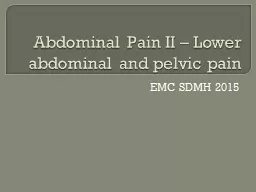PPT-Abdominal Surgery Rotation
Author : ellena-manuel | Published Date : 2015-09-22
EvidenceBased Blood Transfusion Blood transfusion does not simply involve the anesthesiologist hanging pRBCs once 1000 ml of blood are in the suction container
Presentation Embed Code
Download Presentation
Download Presentation The PPT/PDF document "Abdominal Surgery Rotation" is the property of its rightful owner. Permission is granted to download and print the materials on this website for personal, non-commercial use only, and to display it on your personal computer provided you do not modify the materials and that you retain all copyright notices contained in the materials. By downloading content from our website, you accept the terms of this agreement.
Abdominal Surgery Rotation: Transcript
Download Rules Of Document
"Abdominal Surgery Rotation"The content belongs to its owner. You may download and print it for personal use, without modification, and keep all copyright notices. By downloading, you agree to these terms.
Related Documents














